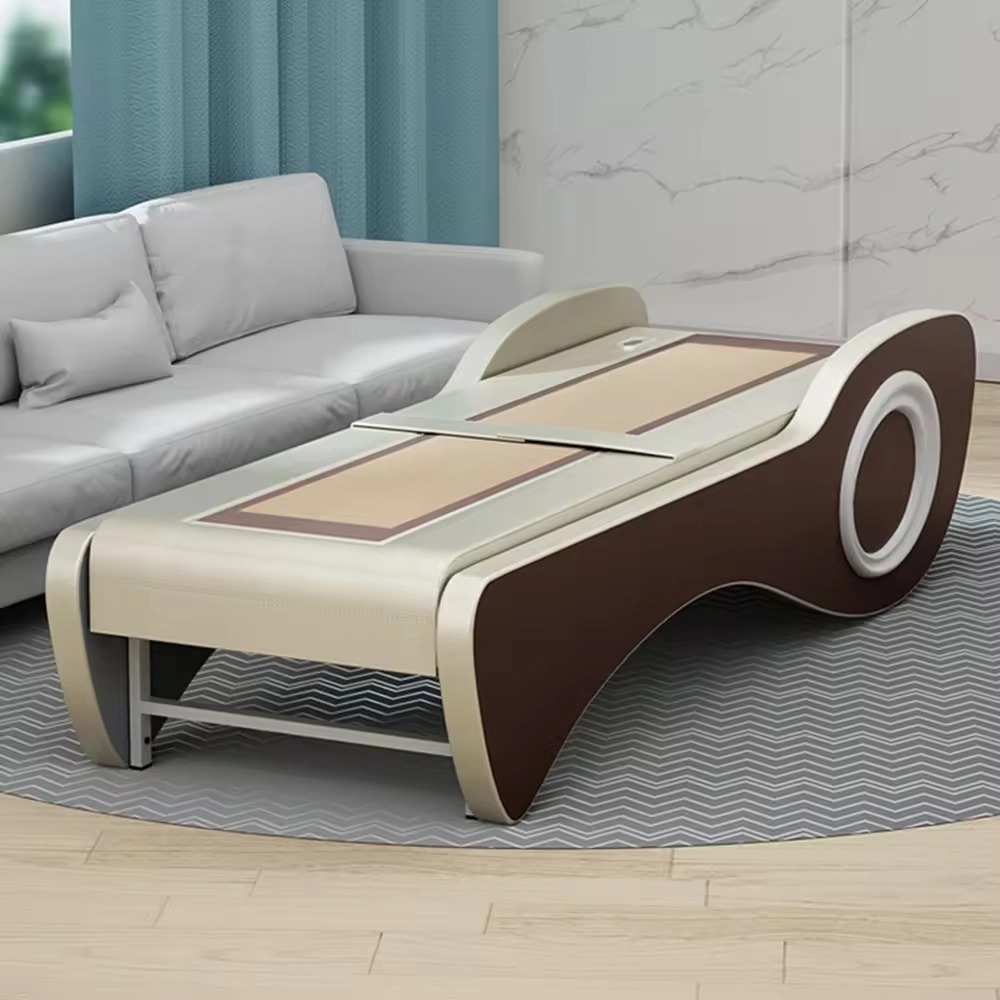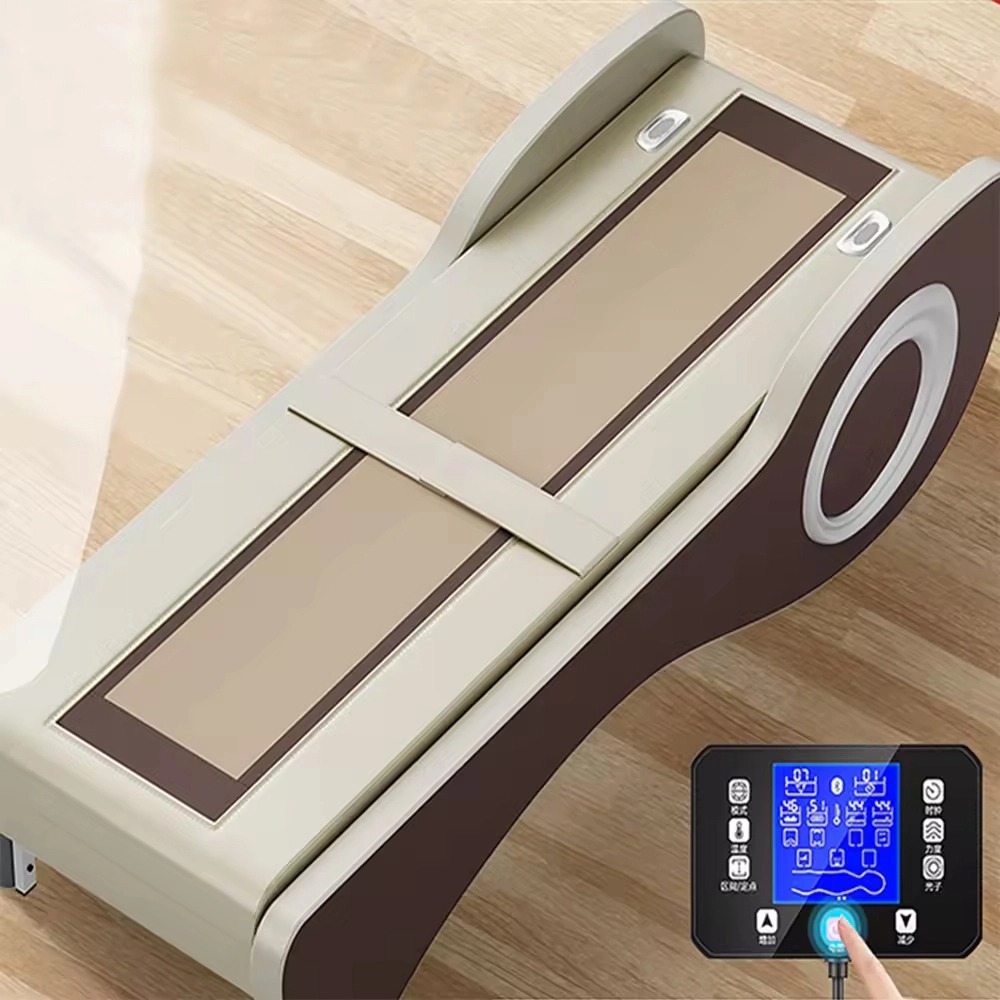In today’s fast-paced world, stress, fatigue, and physical tension have become part of everyday life. An electric massage bed offers an advanced solution to help relieve muscle tension, improve circulation, and promote relaxation—all from the comfort of your home or spa. But what makes a good electric massage bed, and how do you choose one that aligns with your personal or business needs?
This guide delves into the essentials of electric massage beds, explores features of high-performance models, and provides practical tips to help you select the best one.
What Is an Electric Massage Bed?
An electric massage bed is a powered, adjustable platform designed to support the human body while delivering targeted massage therapy through embedded motors and mechanisms. Unlike traditional massage tables, electric beds provide:
Multiple electric adjustment points (height, backrest, footrest)
Integrated massage functionalities (vibration, heat, rolling)
Remote or button-controlled operation
Ergonomic and orthopedic support
These beds are ideal for professional therapists, wellness centers, rehabilitation clinics, and even private individuals seeking comfort and therapeutic benefits.
A good electric massage bed isn’t just a luxury—it’s an investment in wellness and client satisfaction.

Key Features of a Good Electric Massage Bed
Adjustability and Comfort
The first sign of a premium electric massage bed is seamless adjustability. Whether you're using the bed for deep tissue therapy or a relaxing spa session, the bed must adapt to the user's posture and needs. This includes:
Height adjustment: Allows therapists to work ergonomically without strain.
Backrest & leg incline: Enables various reclining positions for different treatments.
Removable headrests and armrests: Enhances patient comfort and access.
For example, the Multifunctional Portable Deep Tissue Massage Bed by JingTop offers a silent electric lift system with adjustable angles for head, back, and legs. It supports different therapy modes, accommodating everything from Swedish to Thai massages.
In short, customization is critical. A rigid or non-adjustable bed severely limits the range of therapy options and comfort levels.
Durability and Weight Capacity
A good electric massage bed must be built to last. Daily operation, frequent position changes, and support for different body types demand:
Robust steel or aluminum frame
High-density, tear-resistant upholstery
Reinforced support bars or brackets
One of the most overlooked factors is maximum weight capacity. Top-tier models can support 250–300 kg (550–660 lbs), accommodating all client body types with stability and confidence.
The durability of the motor is also a major factor. Silent, brushless motors rated for thousands of cycles are considered ideal for long-term use.
If you plan to use the bed commercially, longevity is not optional—it’s essential.
Multi-Functionality: More Than Just a Bed
Today’s electric massage beds are no longer limited to basic reclining. Instead, they are multifunctional therapy platforms offering a suite of wellness benefits. Some of the most popular functions include:
Deep tissue vibration massage
Infrared heating for muscle relaxation
Breathing holes or removable face cradles
Foldability for portability (if applicable)
The JingTop massage bed, for example, offers deep tissue vibration and heat therapy, effectively simulating a hands-on massage. The remote-control functionality allows therapists to tailor the treatment in real time.
These additional capabilities extend the bed’s use to physiotherapy, beauty treatments, acupuncture, and even tattoo artistry.
Table: Feature Comparison Checklist
| Feature | Description | Why It Matters |
| Height Adjustment | Electric lift, adjustable range | Ergonomic benefit for therapist |
| Multi-Position Back/Leg Support | Reclining and leg-raising via remote | Custom comfort for clients |
| Motor Type | Quiet, brushless, long-cycle life | Silent operation, long durability |
| Material Quality | PU leather, memory foam, metal frame | Comfort and long-term use |
| Heat & Vibration | Infrared heating, vibration motors | Adds therapeutic value |
| Portability | Foldable or wheeled base | Ideal for mobile therapists or small spaces |
| Maximum Load Capacity | 250–300 kg | Safety for users of all sizes |
This table serves as a decision-making guide for comparing massage beds before purchase.

Design, Aesthetics, and User Experience
When considering a good electric massage bed, aesthetics often take a backseat—but they shouldn’t. Design plays a big role in how your clients perceive your professionalism and care quality.
Modern electric beds come with:
Minimalist, sleek surfaces
Neutral tones like beige, grey, or black
Soft-touch upholstery that’s easy to clean
Rounded corners for safety
Not only do these features contribute to the room’s decor, but they also offer a psychologically soothing effect, enhancing client relaxation.
The JingTop model stands out with its smooth silhouette and spa-style finish, making it suitable for both clinical and luxury settings.
From a user’s perspective, tactile controls, minimal noise during operation, and overall bed stability greatly enhance satisfaction.
Portability vs. Permanence: What's Best?
Depending on your profession or space, portability may or may not be a deciding factor. While electric massage beds tend to be heavier than manual ones, some models are surprisingly foldable or mobile.
When is a portable electric bed better?
If you’re a mobile therapist, offering home sessions.
If your clinic layout changes frequently.
If you operate in multi-use rooms where beds are moved.
Conversely, if your bed is for fixed location use, opt for a non-foldable heavy-duty model with integrated power cords and wheels with brakes for occasional repositioning.
The good news? Some multifunctional beds manage to offer both stability and portability. JingTop’s portable deep tissue bed folds easily and remains sturdy when unfolded, offering the best of both worlds.
Common Questions (FAQ) About Electric Massage Beds
Let’s answer some frequently asked questions for those still unsure about choosing the right model.
Is an electric massage bed suitable for home use?
Yes. While originally intended for commercial use, many electric massage beds are now designed for personal wellness at home. If you have chronic back pain or limited mobility, the electric adjustability makes it much easier to use than a manual one.
How long does an electric massage bed last?
With proper care, high-quality models can last 8–10 years or more. Look for beds with CE/FDA certifications, replaceable parts, and reputable manufacturers to ensure longevity.
Do I need professional installation?
Most units come pre-assembled or require minimal setup. However, for spa or clinic use, you may want an electrician to help with cable management and voltage safety.
Can I clean the bed easily?
Yes. Most electric massage beds use PU leather or waterproof vinyl that’s resistant to oil, sweat, and stains. Just wipe it down with mild soap and water after each use.
What’s the typical price range?
Electric massage beds typically range from $500 to $3000, depending on features and build quality. While this may seem steep, the return on investment—especially for therapists and wellness centers—is significant.
Conclusion
A good electric massage bed is the perfect fusion of function, comfort, and longevity. Whether you're a licensed therapist, a clinic owner, or an individual seeking therapeutic relief at home, choosing the right model depends on your specific needs:
Customization options to fit diverse treatment methods
Durability for commercial-grade use
Multi-functionality for value-add services
Design appeal that enhances client experience
The Multifunctional Portable Deep Tissue Massage Bed by JingTop exemplifies these traits with its ergonomic build, quiet operation, integrated vibration and heat functions, and portable design.
Ultimately, investing in a high-quality electric massage bed elevates your services, protects your posture, and promotes holistic well-being for your clients.

















